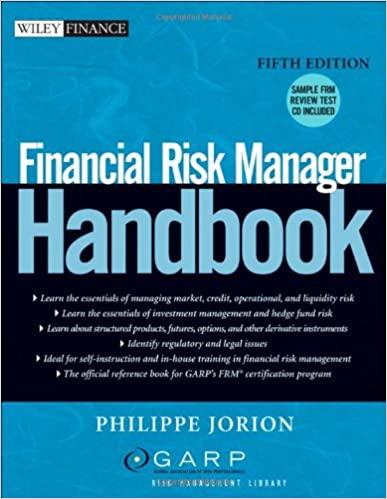Answered step by step
Verified Expert Solution
Question
1 Approved Answer
[ 1 point. Circle the letter of the correct answer. ] Consider the formula pertaining to interest compounded discretely - i . e . ,
point. Circle the letter of the correct answer. Consider the formula pertaining to interest compounded discretelyie Which of the following is true? a In this case, if we consider the future amount as a function of the interest rate then the derivative with respect to is which is the instantaneous rate at which the future amount for a specified principal time and compounding frequency is changing with respect to the interest rate at exactly the interest rate Moreover, for any specific choice of and encountered in practice ie where and are positive we know that In other words, we know that the future amount is increasing with respect to the interest rate associated with the investment or account. b In this case, if we consider the future amount as a function of the compounding frequency and the derivative with respect to is you are allowed to accept on faith that this formula is correct! which is the instantaneous rate at which the future amount for a specified principal time and interest rate is changing with respect to the compounding frequency at precisely the frequency Furthermore, for any given choice of and encountered in practice ie where and are positive we know that Question below is relevant. In fact, not only is strictly increasing with respect to but we also know that as Therefore the formula for interest compounded continuously is the limit of the formula for interest compounded discretely, as increases without bound; equivalently, is a horizontal asymptote of c In this instance, we consider the future amount as a function of the time and the derivative with respect to is which is the instantaneous rate at which the future amount for a given principal interest rate and compounding frequency is changing with respect to the time at precisely the time Also, for any specific choice of and encountered in practice ie where and are positive we know that so that is increasing with respect to time d All of the above. e None of the above. 
point. Circle the letter of the correct answer. Consider the formula pertaining to interest compounded
discretelyie Which of the following is true?
a In this case, if we consider the future amount as a function of the interest rate then the derivative with
respect to is
which is the instantaneous rate at which the future amount for a specified principal time and
compounding frequency is changing with respect to the interest rate at exactly the interest rate
Moreover, for any specific choice of and encountered in practice ie where and are
positive we know that In other words, we know that the future amount is increasing with
respect to the interest rate associated with the investment or account.
b In this case, if we consider the future amount as a function of the compounding frequency and the
derivative with respect to is you are allowed to accept on faith that this formula is correct!
which is the instantaneous rate at which the future amount for a specified principal time and
interest rate is changing with respect to the compounding frequency at precisely the frequency
Furthermore, for any given choice of and encountered in practice ie where and are
positive we know that Question below is relevant.
In fact, not only is strictly increasing with respect to but we also know that as
Therefore the formula for interest compounded continuously is the limit of the formula for interest
compounded discretely, as increases without bound; equivalently, is a horizontal asymptote
of
c In this instance, we consider the future amount as a function of the time and the derivative with respect
to is
which is the instantaneous rate at which the future amount for a given principal interest rate and
compounding frequency is changing with respect to the time at precisely the time Also, for any
specific choice of and encountered in practice ie where and are positive we know
that so that is increasing with respect to time
d All of the above.
e None of the above.
Step by Step Solution
There are 3 Steps involved in it
Step: 1

Get Instant Access to Expert-Tailored Solutions
See step-by-step solutions with expert insights and AI powered tools for academic success
Step: 2

Step: 3

Ace Your Homework with AI
Get the answers you need in no time with our AI-driven, step-by-step assistance
Get Started


